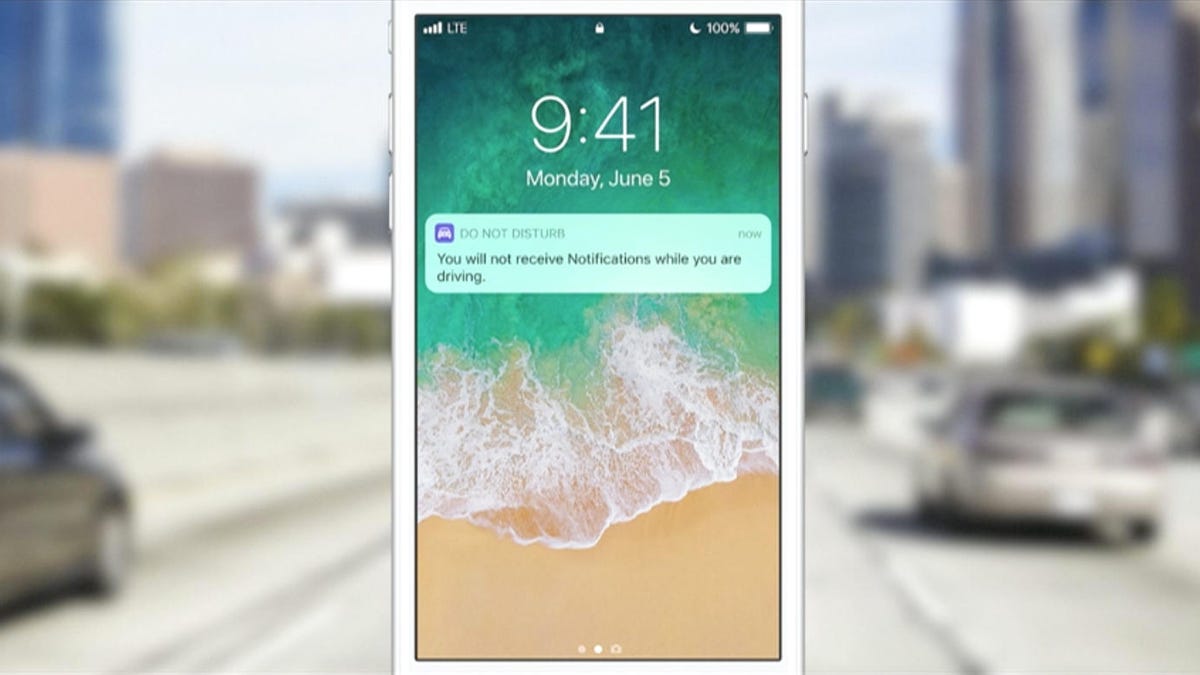Apple can't stop distracted driving
Apple makes a sound attempt at preventing drivers from using iOS 11-equipped phones, but the issue requires a social, not a technical fix.
With recent statistics pointing to an uptick in traffic fatalities after years of decline, distracted driving bears the brunt of the blame. So Apple can be commended for announcing a new feature in its upcoming iOS 11, the operating system for its popular iPhone , that attempts to prevent distracted driving. This feature, called Do Not Disturb While Driving (DNDWD), detects when you are driving, and makes phone use largely inaccessible.
Beyond the fact that drivers can easily disable DNDWD, this technical fix ignores many scenarios where communication can be important, possibly even life-saving, in a car.
Admittedly, I haven't seen how DNDWD works in the real world, but according to Apple's brief presentation during WWDC 2017, it will use Bluetooth and Wi-Fi to determine if the phone is in a moving car. It then mutes all text and call alerts from the phone. If the driver picks up the phone, it will show a black screen, and if the driver persists, it shows its DNDWD screen, so the driver knows the feature is working.
Recognizing that there are uses for a phone in the car, Apple built in a few caveats. You can indicate to the phone that you are a passenger, and it will let you use it normally. Likewise, you can designate certain contacts that will break through DNDWD, so you will get text and calls from them.
So what if you designate your spouse as a break-through contact, and they text to ask about dinner? DNDWD can't distinguish between an innocent and an emergency tweet. What if someone not among your designated contacts calls to let you know a loved one is in the hospital? You won't hear about it.
What if you've spent years using your phone safely on a mount in your car, ignoring text messages and just using navigation? Do you need DNDWD?
My point is that driving scenarios are too varied for a simple fix. It's fine that Apple implemented this feature in iOS 11, but will it really help?
Research shows that seatbelts reduce the risk of fatal injury to front-seat passenger car occupants by 45 percent and the risk of moderate-to-critical injury by 50 percent.
As a parallel, seatbelts have proven an incredibly important feature to protect people in car crashes. For a few decades after they became common, people often didn't buckle up. A few carmakers tried seatbelts that automatically engaged when you closed the car door. This type of seatbelt was so unpopular that you don't see them anymore. Apple's DNDWD is kind of like those automatic seatbelts.
Now, due to laws and public information campaigns, the most populous states in the country show over 90 percent seatbelt use. Only one state, New Hampshire, shows less than 70 percent seatbelt usage. I've certainly absorbed years of public information such that I think you would have to be an idiot to drive or ride in a car without a seatbelt.
The same needs to happen for distracted driving, especially as it pertains to phone use.
I've felt that emotional tug when I hear a text alert while driving, but have ignored it, leaving my phone alone. Even if I'm using a hands-free phone system, I might ignore a call if I don't think it's important. Good public information campaigns need to emphasize the dangers of using a phone while driving.
It may take a few years to bring current rates down, but this problem will take more than a technical fix.


